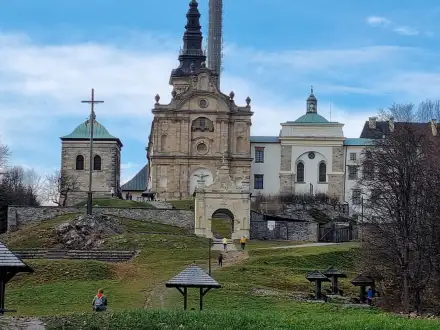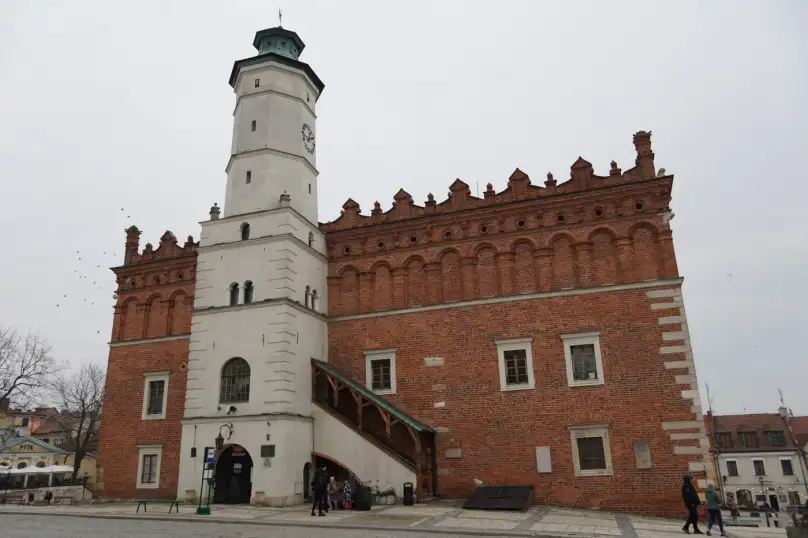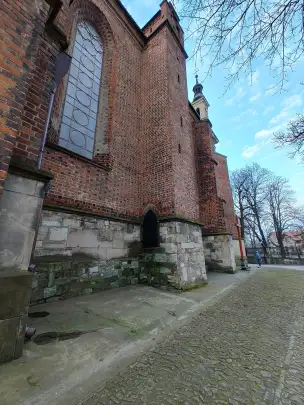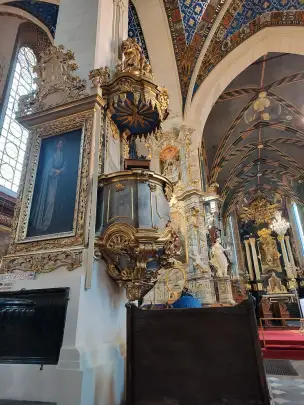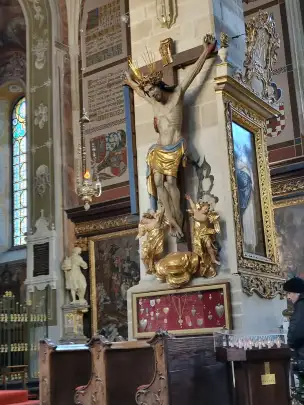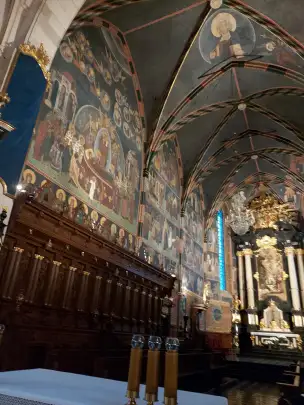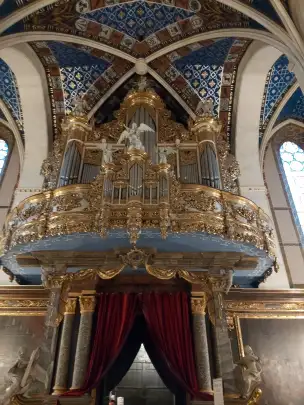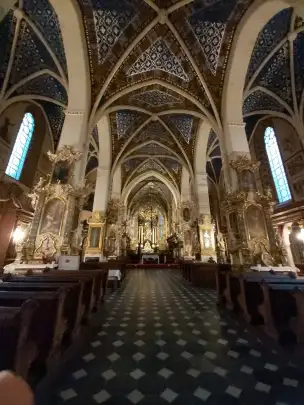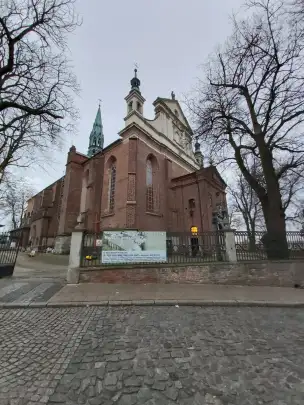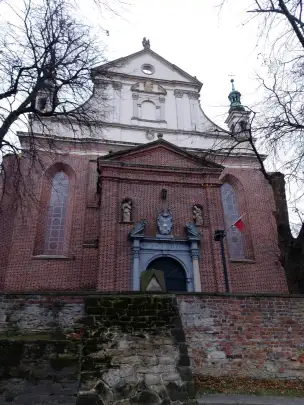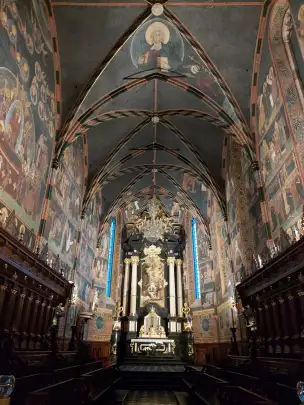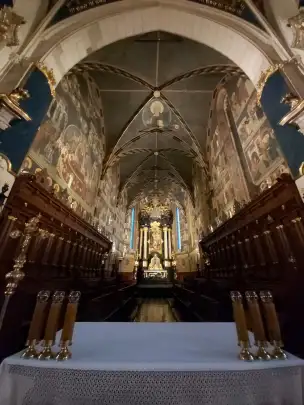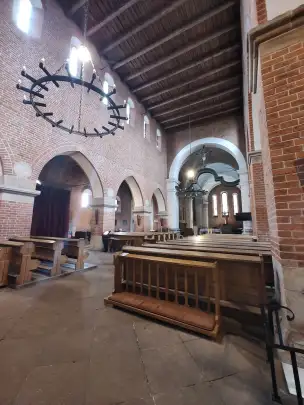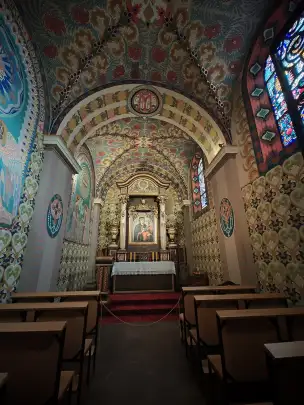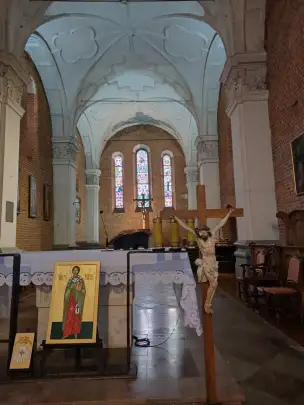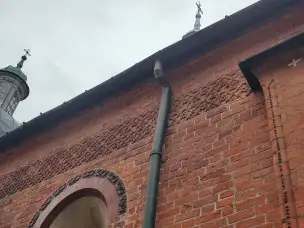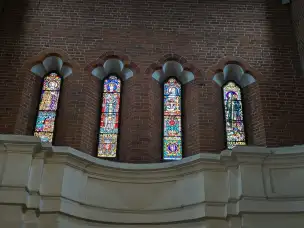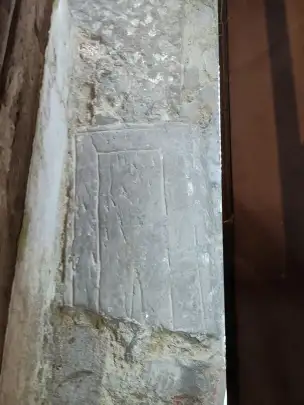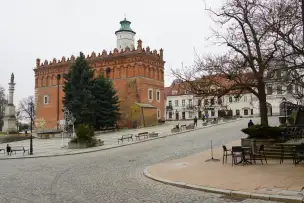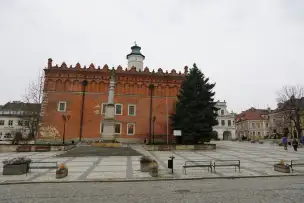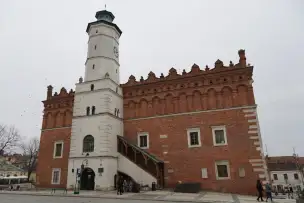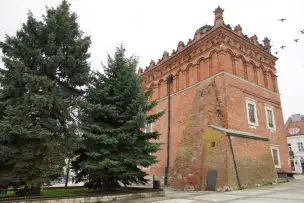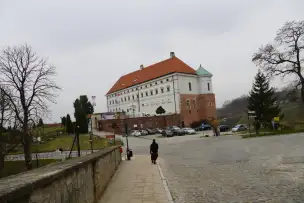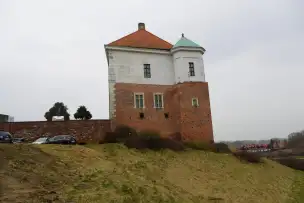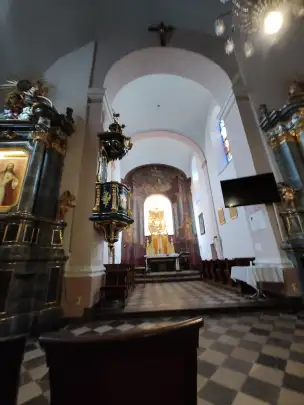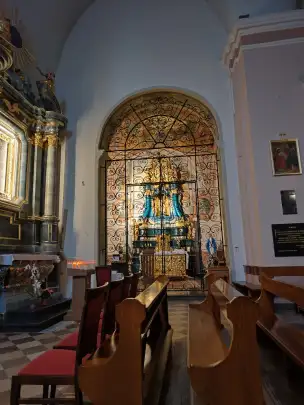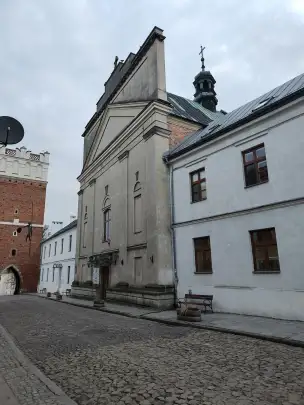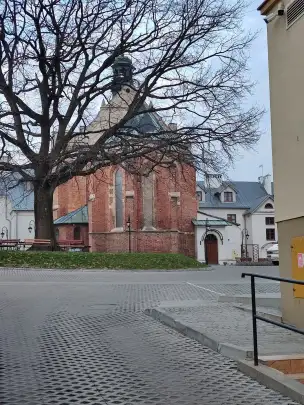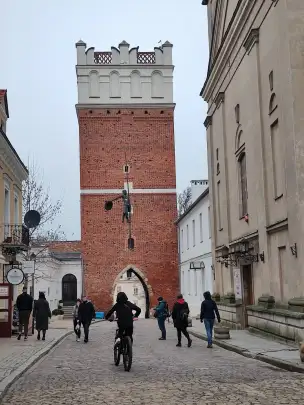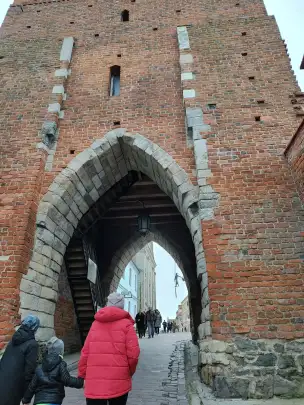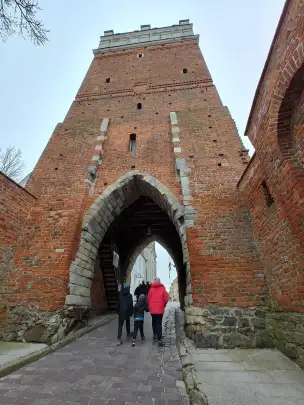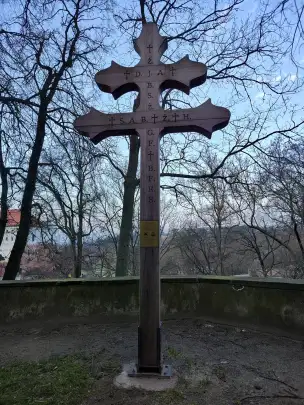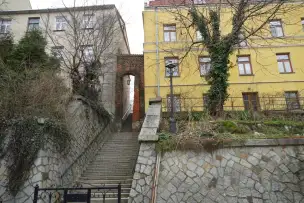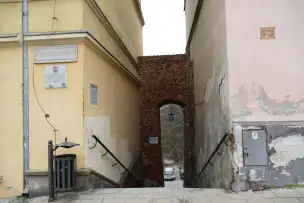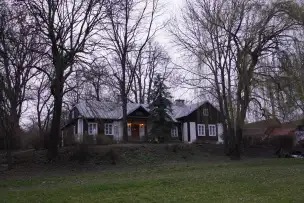One of the oldest cities in Poland, with a rich history dating back to as early as the 11th century.
Once, I would have praised Sandomierz as a better alternative to the pretentious Kazimierz nad Wisłą — a mecca for people aspiring to be part of the elite. But after the success of the TV series about Father Mateusz, that’s no longer true.*
Today, tourist-wise, Sandomierz has swallowed Kazimierz nad Wisłą and pushed out Ciechocinek. And rightly so, because it has much more to offer, and everyone prefers the company of regular tourists rather than those who learned how to eat meringue from Jolanta Kwaśniewska’s guidebook.
Gastronomy
A friend of mine claims that Sandomierz is a culinary desert. That’s quite an exaggeration, but there is some truth to it when compared to Kazimierz Dolny. However, it’s important to remember that Sandomierz is a living city, whereas Kazimierz is a Renaissance stage set where residents live solely off tourism or work elsewhere and come to the town only for weekends.
In Sandomierz, most restaurants in the Old Town serve local and traditional dishes, so if you’re not looking for fusion cuisine, you won’t be disappointed.
Sandomierz is also known for wine, cheeses, and krówki (Polish fudge candies). While the quality of the wine is unquestionable, the krówki sold everywhere are as original as Sandomierz fridge magnets made in China. These candies are actually produced in Opole Lubelskie, and in terms of taste, they are not creamy enough.
*Kazimierz nad Wisłą hasn’t been elite for a long time — that’s just my prejudice from the 1990s.
Sandomierz is rich in architectural monuments, including a Gothic cathedral, a royal castle, a town hall, churches, and many historic townhouses.
The Old Town of Sandomierz has preserved its medieval urban layout.
Cathedral Basilica of the Nativity of the Blessed Virgin Mary
A Gothic church built around 1360 and expanded in the mid-15th century.
The interior of the church is late Baroque and Rococo, while the polychrome paintings in the presbytery are in the Byzantine-Ruthenian style and date back to the 15th century. These polychromes were created at the initiative of Władysław Jagiełło, who crossed the threshold of the Sandomierz collegiate church for the first time on his way to Kraków for his wedding. Around 1423, magnificent frescoes were painted in the presbytery in the canon of Byzantine art. Jagiełło brought artists from Ruthenia to create them.
St. James Church in Sandomierz
According to Wincenty Kadłubek, the church was founded before 1211 by Princess Adelaide, daughter of Casimir II the Just, although the original building may have been even older than the one mentioned in Kadłubek’s chronicle.
The church was certainly connected with the routes of St. James.
It has survived in its present form despite numerous wars. It came close to ruin several times, but thanks to the efforts of the Dominicans and later the authorities of Sandomierz, it avoided the fate of the oldest churches of St. John, St. Nicholas, St. Mary Magdalene, and St. Peter, which did not survive to our times and were dismantled in the 19th century.
This church is one of the few Romanesque churches in the world — if not the only one — whose construction incorporates architectural solutions associated with the later Gothic style.
The grave of a Crusader in St. James Church
I’m not entirely sure this is really the grave of a Crusader, but the stone is now well lit, though still unsigned. That suggests it’s something important.
So, how did I come to believe this is the grave of a Crusader knight?
About 20 years ago, when I first visited the church, I noticed a group of tourists gathered around this stone and heard the tour guide say:
"Ladies and gentlemen, here you see the grave of a Crusader, a unique sight in Poland."
Curious, I pushed my way through the tourists, looked at the floor, and saw nothing. The stone wasn’t lit back then, so I asked the guide:
Me: Where exactly is the grave?
Guide: Right here, don’t you see?
Me: No.
Guide: Here. See? There’s a carved leg...
Me: I don’t see it.
Guide: Yes, there is. And here’s the sword!
Me: Still don’t see it.
People: Yes, yes, it’s there. Oh, you can see something here.
Wife: Really? You don’t see it? I clearly see the knight.
Friend: Emil, I see it too. Look, there’s a dagger sticking out.
People: Yes, it’s definitely a knight.
Now I’ve photographed the stone, which is nicely lit these days, and you know what?
I still don’t see anything there…
Sandomierz Town Hall
Built in 1349, shortly after the Lithuanian invasion. Originally Gothic, it was a square building topped with a tall, octagonal tower. In the 16th century, it was expanded in the Renaissance style into an elongated rectangular form.
Royal Castle in Sandomierz
In the 14th century, by the order of King Casimir the Great, a brick Gothic building with a defensive tower was erected on the site of a wooden stronghold. The chronicler Janko of Czarnków lists the Sandomierz castle among 32 others built on the king’s command as part of a campaign to strengthen the country’s defenses.
Today, the castle houses the Sandomierz Castle Museum.
Church of the Holy Spirit in Sandomierz
The church is located within the Old Town, right next to the Opatowska Gate. It was founded in 1292 for the Congregation of the Canons Regular of the Holy Spirit, known as the Duchaks, by Żegota, the castellan of Kraków.
In the dome-like structure topping the altar, there is a group of three angels, with the central one standing on clouds and holding a fairly large Duchak cross in both hands.
The main altar, dating from 1770, is Baroque-Rococo in style and is an example of illusionistic art.
Opatowska Gate
A Gothic gate from the 15th century, topped with a Renaissance attic. It is the only one of the four historic gates to have survived to this day.
Caravaca cross ..... for covid
A beautiful monument of madness, made of iroko wood, representing the chaos that befell the world in the third decade of the 21st century.
Once, such crosses were erected as protection against plague, pestilential air, or epidemics.
Can you imagine? A plague cross for a mild cold.
Dominican Gate – Needle`s Ear
The last preserved gate (furta) in the city walls of Sandomierz. It served as a passageway for communication between the friars of two Dominican monasteries, one of which was located just outside the city walls.
Today, a convenient path leads through the gate to the St. James Gorge and the Queen Jadwiga Gorge.
Skorupski Manor House
One of the few preserved examples of a suburban manor house in Sandomierz, located near the city walls.
Its current name, Father Mateusz’s Manor, suggests a connection to the TV series of the same name. And perhaps it does, considering its location.
